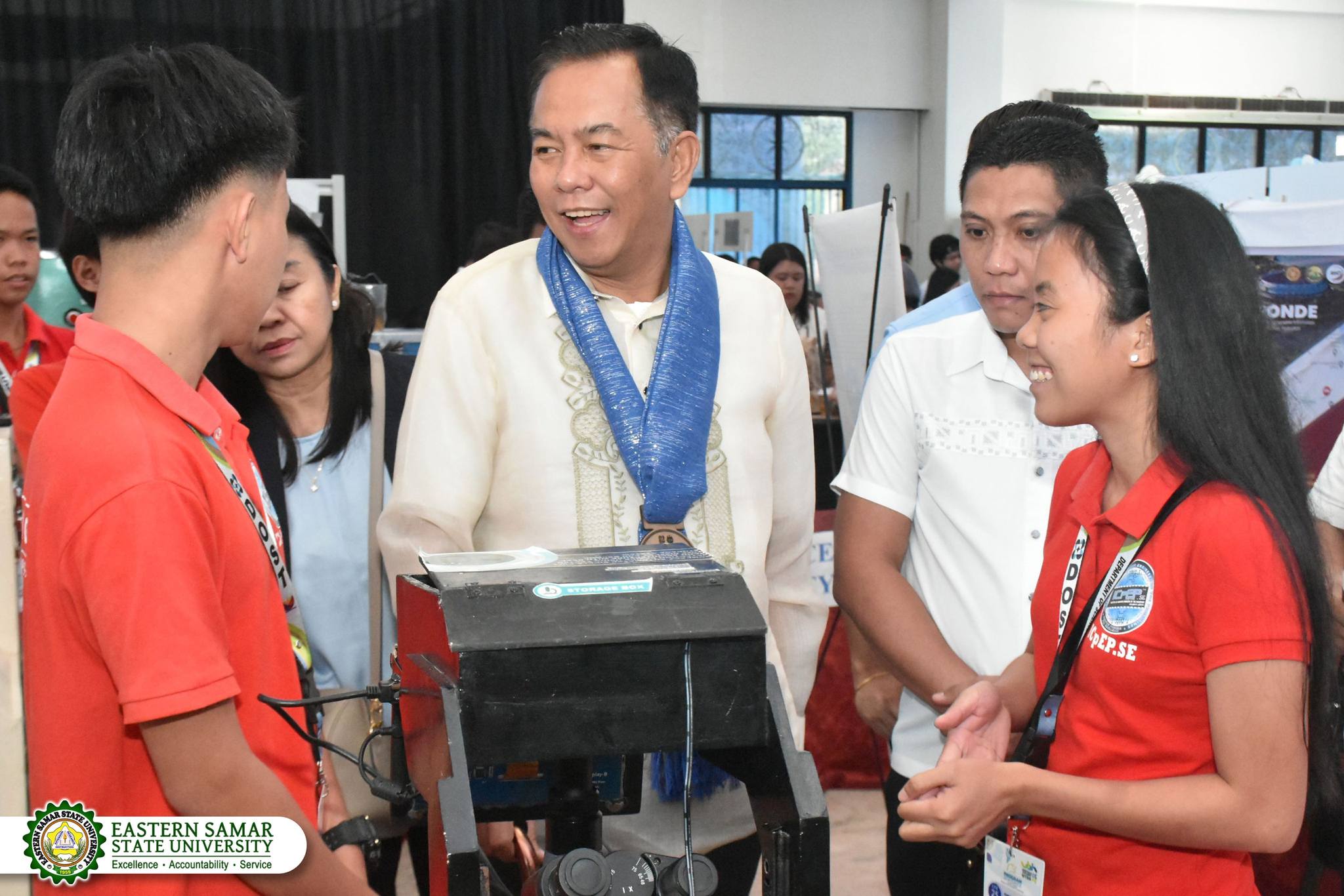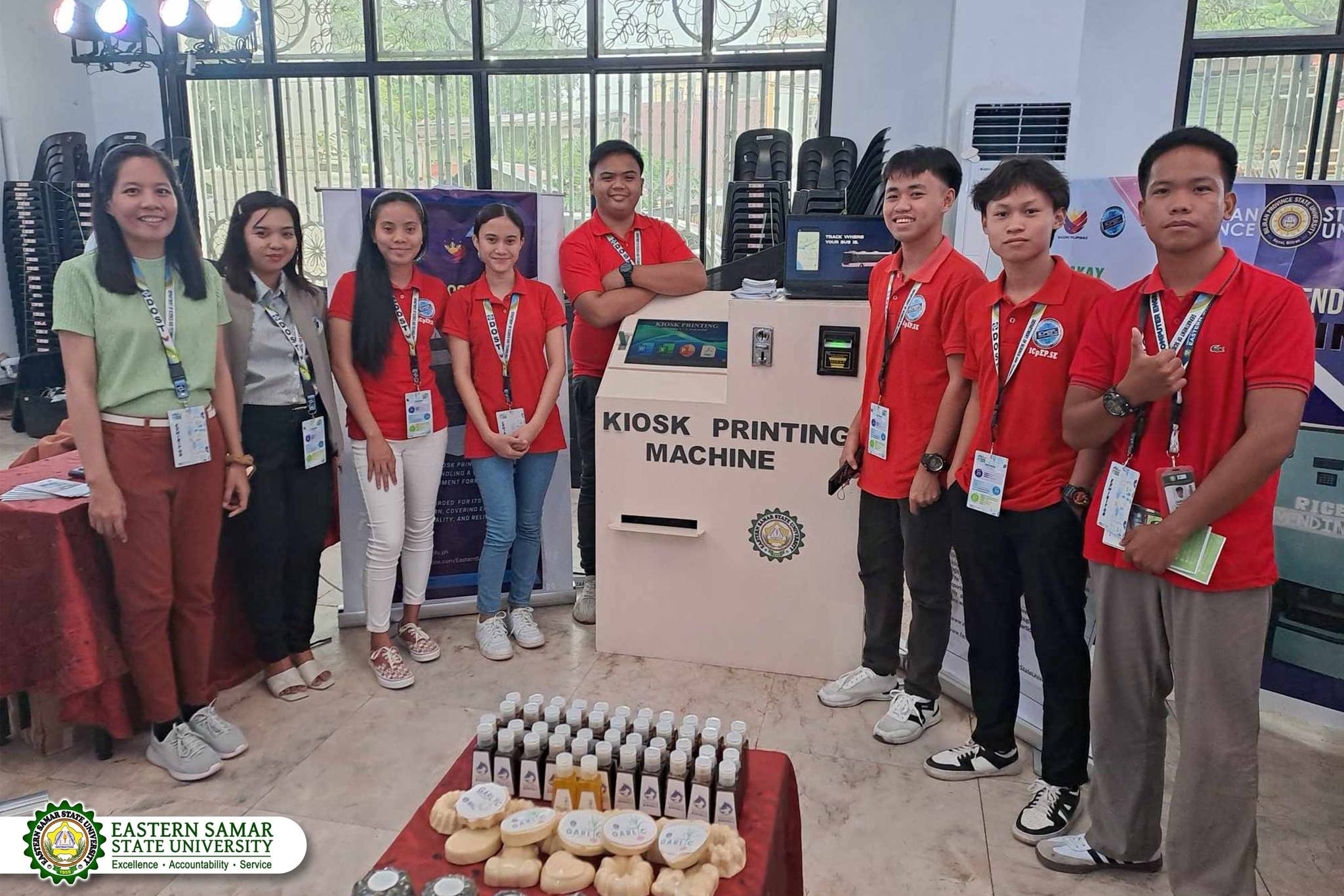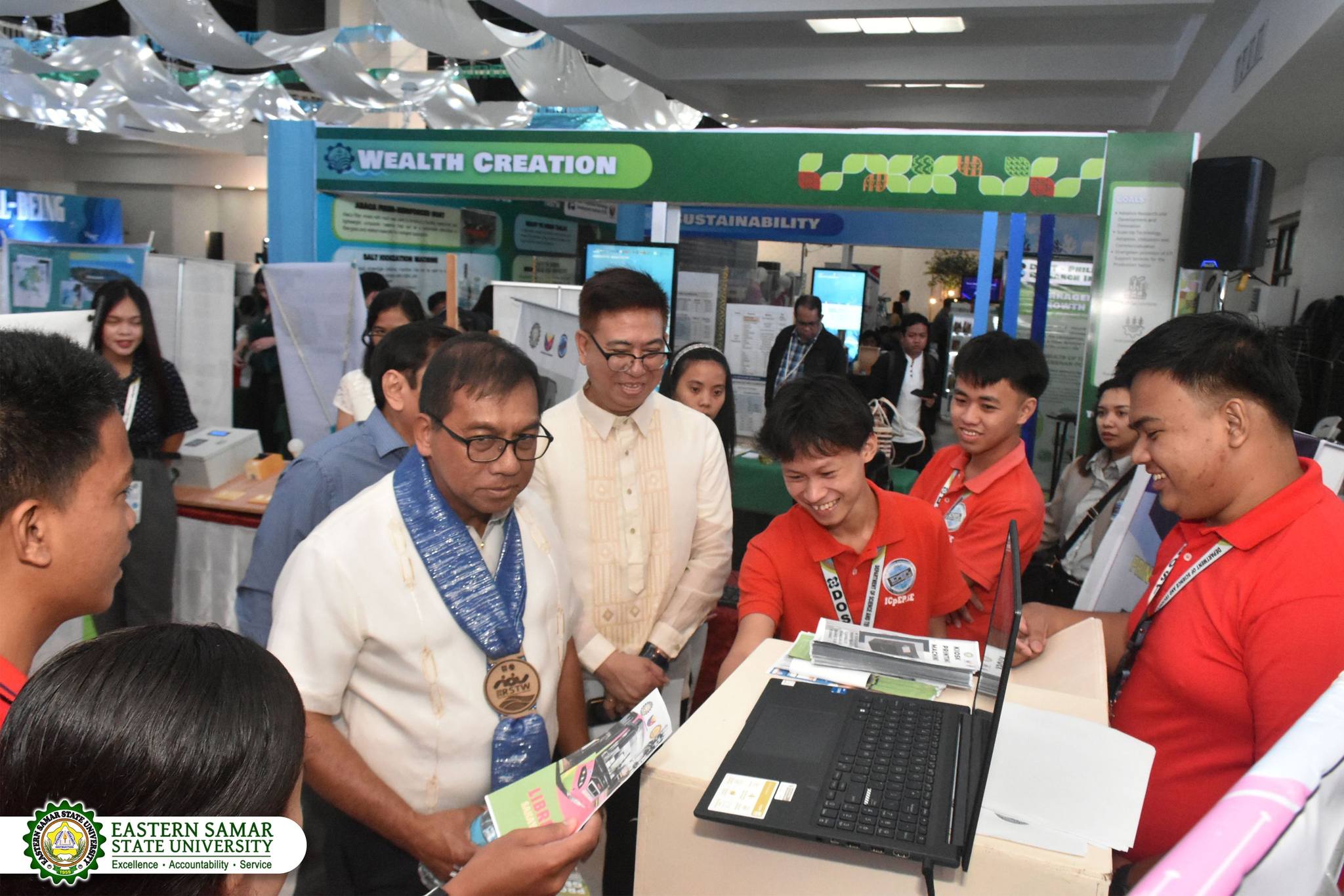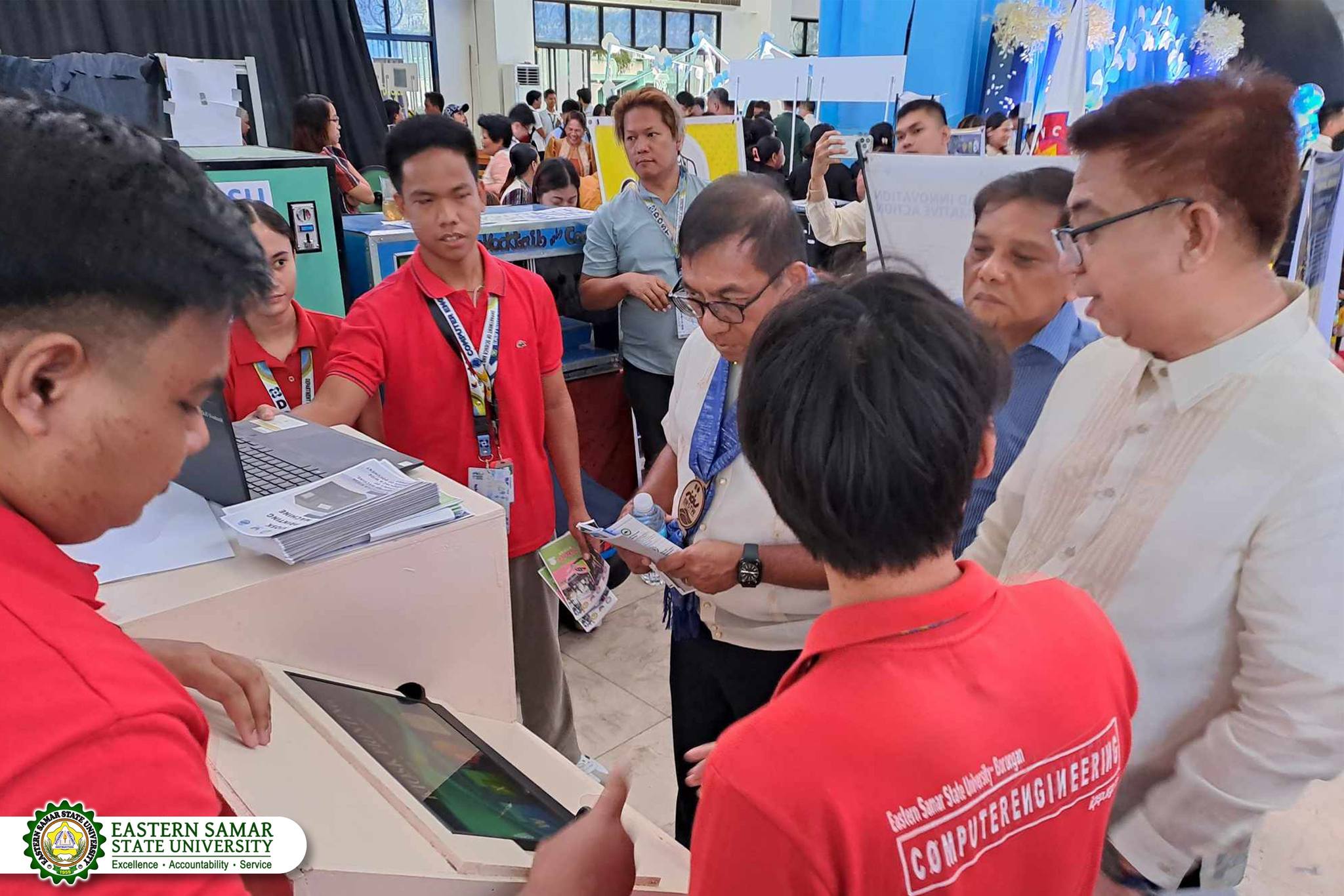In a trailblazing moment, students from Eastern Samar State University showcased an ingenious invention called the Sickle Cell Detection Device at the 2024 Eastern Visayas Regional Science, Technology, and Innovation Week held on June 25–27, 2024, at the People’s Center Library, Tacloban City.
None other than DOST Secretary, Dr. Renato U. Solidum, Jr., was present to observe in the exhibit, along with Undersecretary for Regional Operations, Dr. Sancho A. Mabborang. Students from different SUCs and High Schools in the region were represented in the event, where ESSU participated in the Tertiary Schools category.
This clever invention has been pioneered by former BS Computer Engineering students of the University who have already graduated, namely Cheippy Bula, Cyra Agda, Jayson Balano, Renzo Oblianda, and Rolando Pontilaand. Aubrey Balangay and Christian Casaba, both second year BS Computer Engineering students from the ESSU Main Campus, presented the invention at the said exhibit.
The device can accurately identify sickle cells from blood smears that cause blood clots and inhibit proper blood flow, which is called the Sickle Cell Disease. In such cases, the normal round shape of red blood cells develops an abnormality, causing them to take on a crescent shape instead. Sickle-shaped cells interconnect and stick together instead of flowing freely in the bloodstream. The aforementioned disease causes the patient extreme pain in the back, chest, hands, and feet. The disruption in the blood flow can also cause damage to bones, muscles, and organs. People with sickle cell disease often feel weak, tired, and pale. The whites of the eyes and skin often have a yellowish tint.
This invention has the potential to play a groundbreaking role by allowing residents in remote areas access to this blood disease detection service that gives them a significant fighting chance in battling the illness and seeking treatment at the earliest possible time. The students further explained that among the interesting features of the sickle cell detection device is its ability to securely store data and transfer images to save and access results. The system also automatically identifies sickle cells from blood smear images of patients and detects how many sickle cells have formed.
Presently, the device is still pending filing with the concerned agencies for proper deliberation and review. The researchers are hopeful that, through exhibits, they will be able to solicit funding support for the patent application of this technology.
Also presented by BS Computer Engineering students of ESSU Main in the said exhibit are two other projects: 1) The Libre Sakay (ESSU's SMART Projects) presented by Cristian Niño Jargue and Lenie Andor, and 2) The Kiosk Printing Machine presented by Jose Miguel Baldado and Jake Russel Copada.













